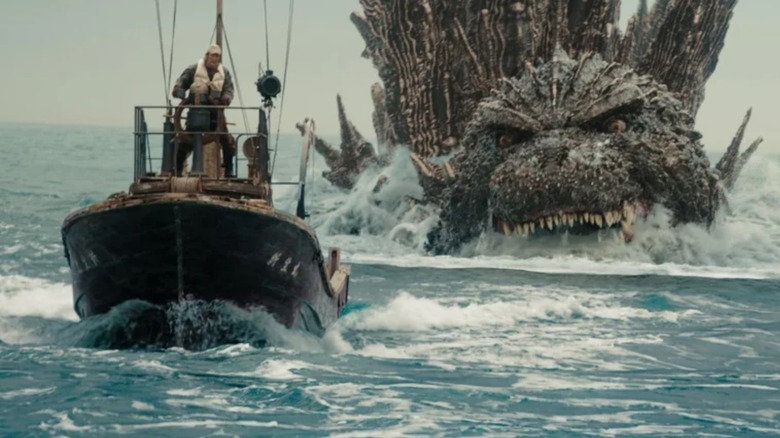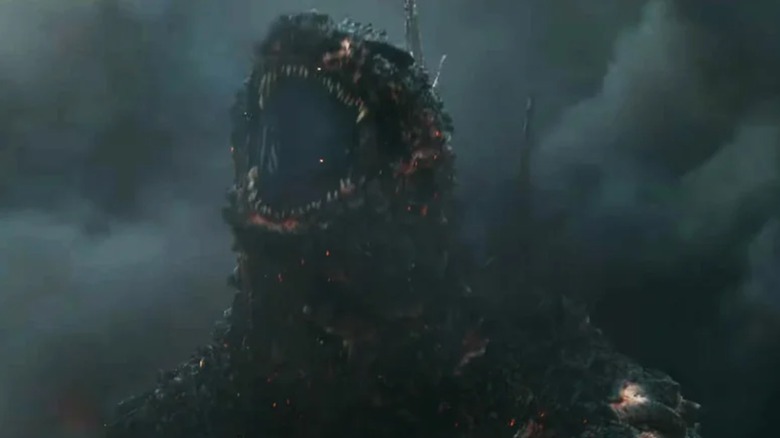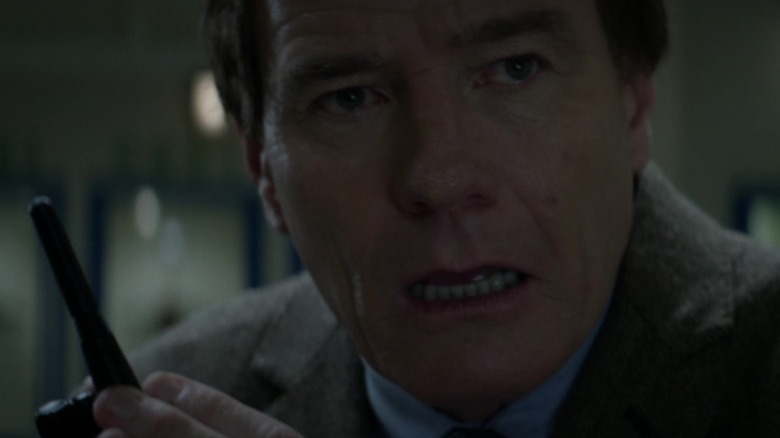Godzilla Minus One Caused A Local Disturbance With The Monster's Roars
The original 1954 "Godzilla" film may look a bit worn 70 years after its release, but one aspect of the movie is still capable of reaching across time and space to rattle the nerves of modern moviegoers: that famous kaiju roar. Ishirō Honda's groundbreaking film brought its eponymous creature to life with a screeching, discordant sound that sends tingles down the spine, and it's a noise that the latest Toho Studios masterpiece, the critically acclaimed "Godzilla Minus One," aimed to emulate and expand upon.
In an interview with A Frame, the sound team behind the Oscar-winning film explained exactly how they put together the new Godzilla roar, a stunning noise that punctuated the film's first trailer and sounds even better in context. According to writer-director Takashi Yamazaki, he and the sound team decided to create the latest roar in part by replaying the original audio in a space that would allow for major echoes and reverberations. "We wanted to play it in a vast, open space, so we rented a baseball stadium and brought about 10 sound guys," Yamazaki said. "We set up speakers and mics, used the baseball stadium's own speakers, and played the original Godzilla roar."
A stadium recording session led to noise complaints
The idea worked: "The echo and the way the audio bounced created this sense of a massive creature roaring in a vast, open environment," Yamazaki told A Frame, revealing that the team recorded the roar directly as it bellowed through the stadium speakers. "That was fun and very interesting, showcasing Godzilla's size and scale," he added. Despite the fact that the stadium was empty, though, the filmmaker says the crew still received noise complaints. "We got a lot of complaints afterward from the neighbors who lived near the baseball stadium, saying, 'There's a massive monster roaring near my house!'" the filmmaker explained.
Sound designer, foley artist, and re-recording mixer Natsuko Inoue also described the stadium experience in a piece by Japanese-language outlet Real Sound. "I felt that my role was to reproduce the voice of the national treasure that was summoned in 1954 using the current sound system," Inoue told the outlet (her quotes here have been translated). "I did various things to keep the voice intact. In the end, I realized that it didn't have enough resonance." The sound designer realized this would be the perfect chance to use an approach she'd been wanting to try for a while, in which she recorded outside in a large open-air space and incorporated the feedback into the sound.
Legendary's Godzilla got loud once, too
The recording took place at ZOZO Marine Stadium in Chiba City, Japan, where Yamazaki told the outlet the space felt like it was trembling due to the impressive sound. "I'll never forget the feeling I felt when I heard it played from the biggest speaker at the back of the building," Inoue told Real Sound. This is far from the first time "Godzilla" filmmakers have gotten creative — and extra loud — with their sound design. According to NPR, the Legendary version of "Godzilla" from 2014 used rusty car doors, scraping drums, a scientific microphone, and elements the sound designers are still keeping secret, while the very first "Godzilla" film's roar — the one played at ZOZO stadium — was made from a manipulated string instrument.
"It was actually a double bass, using a leather glove coated in pine-tar resin to create friction," MonsterVerse sound designer Erik Aadahl told NPR. "They'd rub it against the string of the double bass to create that sound." Aadahl and fellow sound designer Ethan Van der Ryn played their own kaiju sound through speakers that were usually used by the Rolling Stones in order to get some echo going, apparently disturbing the neighbors next to the Warner Bros. lot. "The neighbors started tweeting, like, 'Godzilla's at my apartment door!' Aadahl told NPR, "And we were getting phone calls from Universal Studios across town, because tour groups were asking, 'What's all that commotion going on down in the valley?'" Okay, I'm officially adding "hear a Godzilla roar at full volume" to my bucket list.
"Godzilla Minus One" still doesn't have a digital and home video release date set in the United States, but the movie will be available for Prime Video subscribers living in Japan beginning May 3rd, per Digital Spy.


